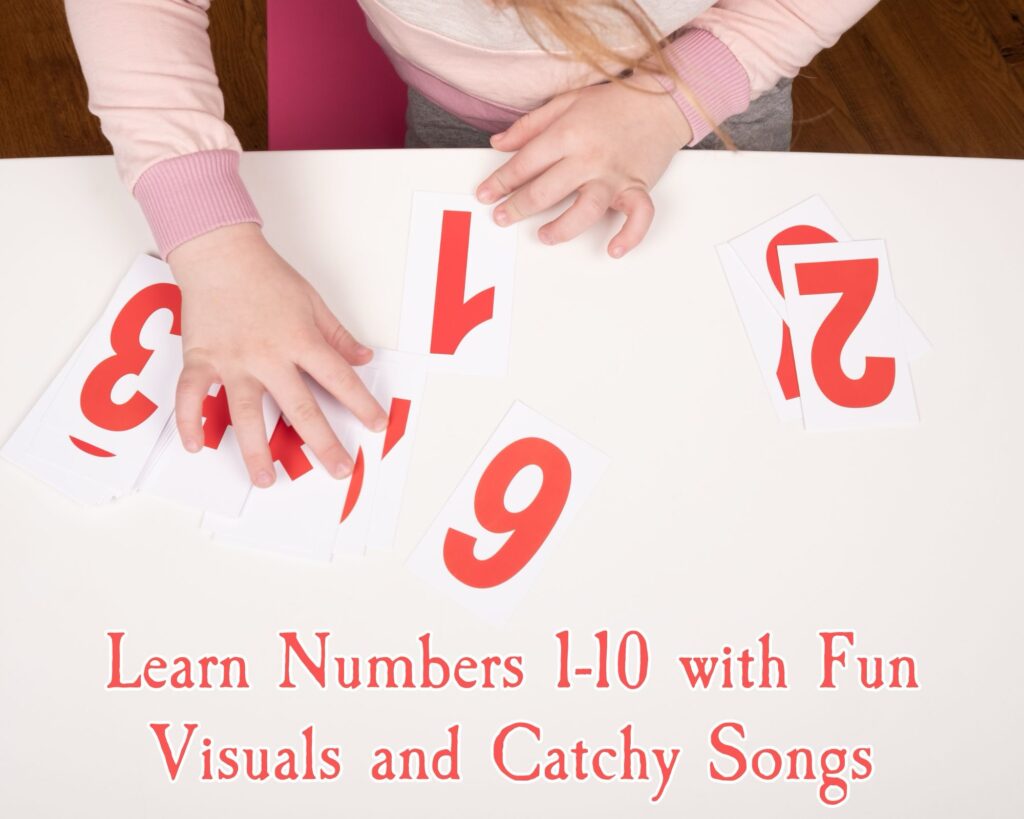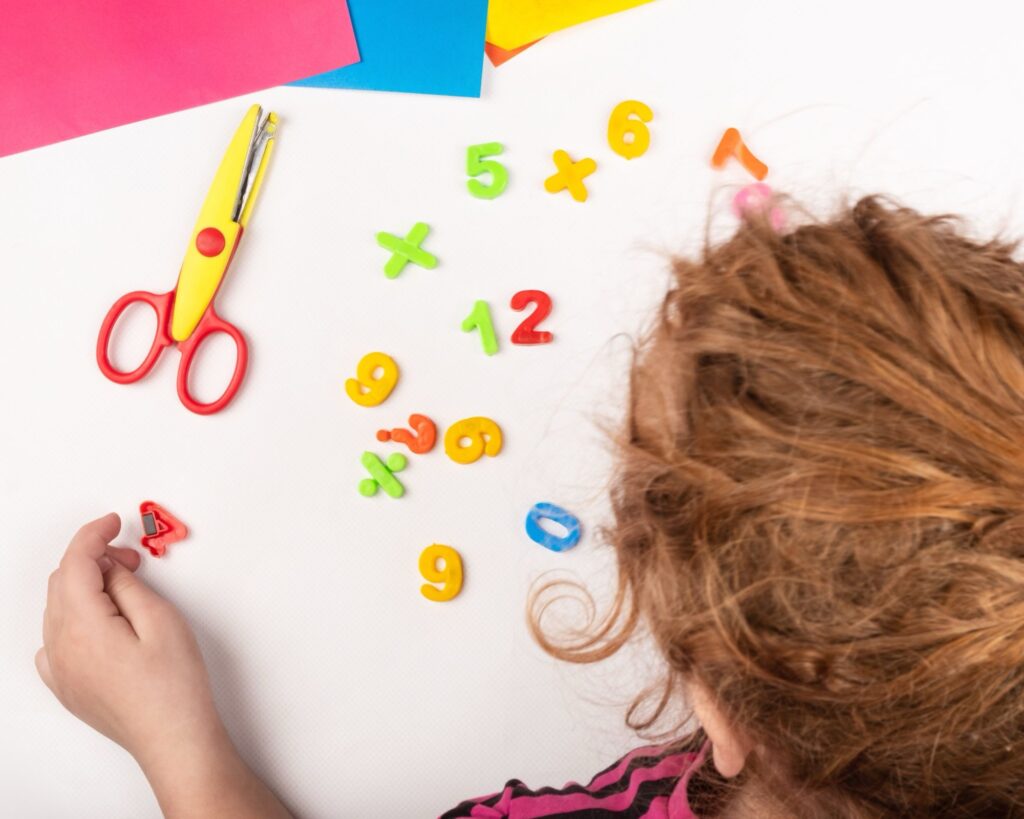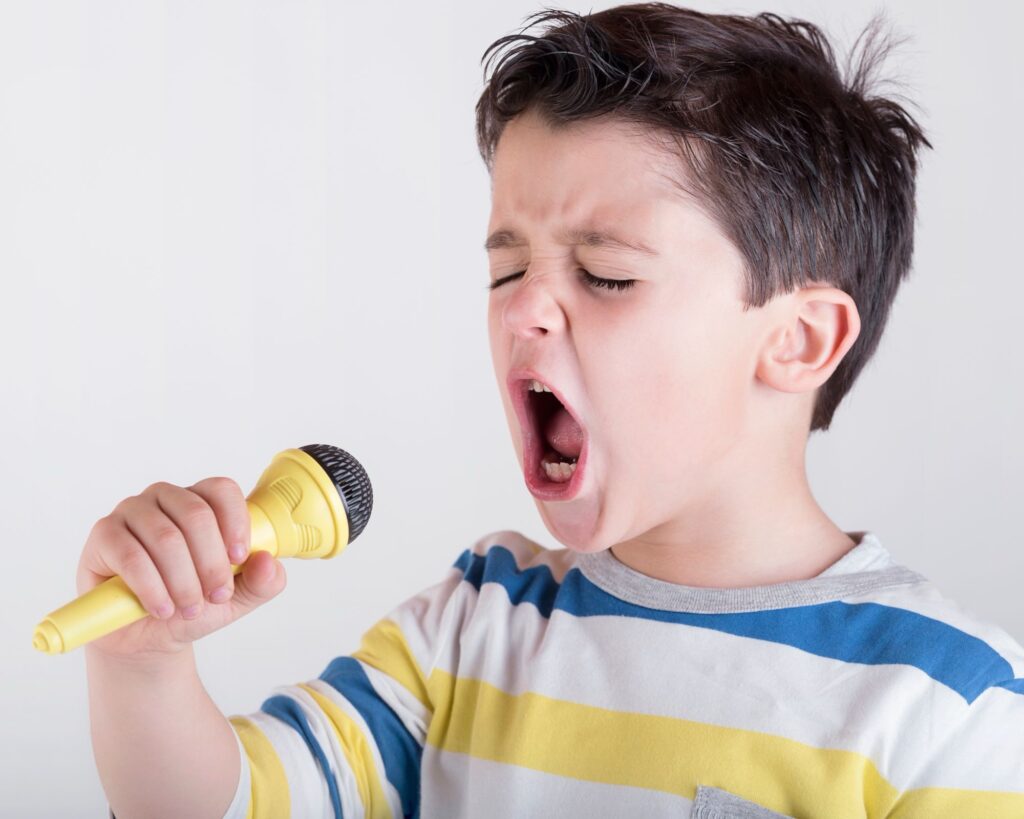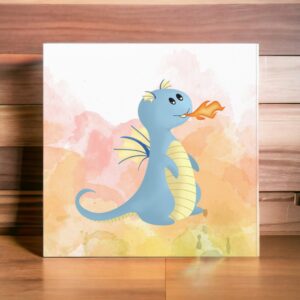
Making Math Fun from the Start
Hello, fellow adventurers in the magical world of early learning! Are you ready to turn the daunting task of teaching numbers into a joyous journey filled with laughter, song, and creativity? If you’ve ever found yourself wondering how to make the numbers 1 through 10 as delightful to preschoolers as their favorite storybook or cartoon, you’re in the right place!
Let’s face it, math can sometimes get a bad rap. It’s often seen as the more serious sibling in the family of learning. But what if I told you that early math learning could be transformed into an enchanting adventure, one where numbers come alive with personality and pizzazz? That’s right – we’re talking about making numbers as lovable as puppies, as fascinating as space travel, and as catchy as the chorus in the latest hit song.
The secret sauce? A sprinkle of imagination, a dash of creativity, and a generous helping of fun visuals and catchy tunes. By presenting numbers in a vibrant, engaging manner, we can captivate the curious minds of preschoolers, turning what might initially seem like a chore into an exciting exploration. And the best part? You don’t need to be a Grammy-winning artist or a Disney animator to bring this vision to life. All it takes is a willingness to look at numbers through the eyes of a child, where wonder and playfulness lead the way.
In this article, we’re diving deep into the art of teaching numbers to little learners. We’ll share innovative strategies that combine visual aids with delightful melodies and rhythms, ensuring that each numeral from 1 to 10 isn’t just learned but loved. From transforming the number 1 into a proud, towering tree to turning the number 8 into a pair of friendly snowmen, we’re here to provide you with the toolkit to make numbers sparkle with charm and character.
And let’s not forget the power of a good tune. Catchy songs have a way of sticking in our minds long after they’re heard (admit it, you still know every word to your favorite childhood theme song). We’ll introduce you to simple, memorable songs that intertwine with our visual storytelling, making the act of learning numbers as easy as humming along to a beloved melody.
So, buckle up, dear parents, educators, and all who love to ignite the spark of learning in young hearts. You’re about to embark on a delightful journey where numbers are not just understood but adored. Let’s make math fun from the start, shall we? After all, in the universe of learning, every number is a star waiting to shine.

Visualizing Numbers: A Creative Approach
Now that we’ve set the stage for our numeracy adventure, let’s dive into the heart of our journey: transforming abstract numbers into vivid, relatable visuals. Imagine if the number 2 wasn’t just a symbol on a page but a graceful swan gliding on a lake, or the number 5 could be seen as a starfish stretching its arms in the ocean. This method of visualization not only aids in memorization but also sparks joy and curiosity in young minds.
Take, for instance, the number 1. It’s tall and straight, much like a tree reaching up towards the sky. This imagery can inspire not just a recognition of the number but also a connection to the natural world. As we move on to the number 3, picture it as a heart, symbolizing love and warmth. Each number, from 4 resembling a sailboat to 7 looking like a cliff’s edge, has its own story, waiting to be discovered and embraced.
But how do we bring these stories to life in a way that’s as engaging as it is educational? Through art, crafts, and interactive play. Encourage children to draw or craft the numbers in their newly imagined forms, using a variety of materials and textures. This hands-on approach not only solidifies their understanding of each number’s shape but also enhances fine motor skills and creativity.
And as we embark on these creative explorations, remember, the journey through numeracy doesn’t have to be a solitary one. It can be a part of a broader spectrum of activities that channel children’s energy and enthusiasm for learning. For those moments when the numbers start to blend together, and attention spans wane, why not take a playful break? Visit our treasure trove of ideas at Unleashing Energy: Exciting Indoor and Outdoor Games for Active Kids for inspiration on how to keep the little ones engaged and moving. Whether it’s a game that involves jumping from number to number laid out on the floor or a scavenger hunt for objects that match the shapes of numbers, integrating physical activity can make learning an immersive and exhilarating experience.
By integrating these visual stories and physical activities, we’re not just teaching numbers; we’re inviting children into a world where learning is as natural and exciting as play. Stay tuned, as next, we’ll dive into the rhythm and rhyme of numbers, adding another layer of engagement and memorability to our numeracy adventure.

Crafting Catchy Rhymes for Each Number
With our imaginations running wild with the visual tales of numbers, it’s time to add another layer of enchantment to our learning adventure: the magic of rhyme and rhythm. Just as songs and stories have been passed down through generations, embedding themselves in our memories, so too can the rhythms and rhymes of numbers. This approach not only reinforces the shapes and stories of each number but also taps into the innate human love for music and rhythm, making the learning process irresistibly fun.
Let’s start with the number 1, standing tall and proud like a tree. The rhyme could go something like, “Number 1 is like a tree, standing tall for you and me.” Simple, catchy, and easy to remember. Moving on to the number 2, which we’ve imagined as a graceful swan, the rhyme might be, “Number 2 is a swan in the lake, bending and curving with every wave it makes.” Each rhyme weaves together the visual imagery with the sound of the number, creating a multi-sensory learning experience that sticks.
For the adventurous number 3, shaped like a heart, our rhyme could celebrate friendship and love: “Number 3 is a heart, full of love, flying high like a dove above.” As we progress from 4 to 10, each number gets its own special rhyme, turning the act of learning into a delightful sing-along journey.
But why stop at just saying the rhymes? Let’s bring them to life with actions and dances. Imagine children stretching up high for number 1, gliding gracefully for number 2, and making heart shapes with their hands for number 3. These physical movements not only help burn off some of that endless energy but also deepen the connection between the numbers and their stories.
Incorporating these rhymes into daily routines can make learning numbers a joyful part of everyday life. Whether it’s during morning circle time, a midday break, or winding down before naptime, a little rhyme time can make a big difference in reinforcing number recognition. Plus, it’s a fantastic way for caregivers and educators to bond with their little learners, sharing in the joy and laughter that these rhymes inevitably bring.
- Number 1 is like a tree, standing tall for you and me.
- Number 2 is a swan in the lake, bending and curving with every wave it makes.
- Number 3 is a heart, full of love, flying high like a dove above.
- Number 4 is a sail, blowing in the wind, strong and never frail.
- Number 5 is a starfish in the sea, waving its arms, happy as can be.
- Number 6 is a snail, curling round, with a shiny, slippery trail.
- Number 7 is a cliff so steep, where eagles soar and mountain goats leap.
- Number 8 is an hourglass, marking time, as present moments into memories pass.
- Number 9 is a balloon, floating up, reaching the moon, way past noon.
- Number 10 is a pair of friends, holding hands to the very ends.
These rhymes serve as simple, memorable hooks to help children visualize and remember numbers through playful imagery and stories. Sing them, dance to them, and most importantly, have fun with them! Each rhyme is designed to not only aid in number recognition but also to encourage a love for learning through joy and laughter.

Sing Along with Numbers: A Musical Journey from 1 to 10
Now that we’ve armed ourselves with a vibrant array of visuals and a collection of catchy rhymes for numbers 1 through 10, it’s time to elevate our learning adventure with the power of song. Music has a remarkable ability to enhance memory, making it an invaluable tool in our journey towards number mastery. By weaving our rhymes into a melody, we create a musical journey that not only educates but entertains, making each learning session something children look forward to.
Imagine starting each day with a sing-along session that takes children through our numbers 1 to 10, using the rhymes we’ve crafted. Each verse of the song corresponds to a number, creating a narrative that reinforces the visual and verbal associations we’ve established. This method doesn’t just teach; it captivates, ensuring that the numbers and their unique stories stick with children long after the song ends.
Incorporating instruments or everyday objects as makeshift drums or shakers can add an extra layer of engagement, allowing children to feel the rhythm physically as they sing. It’s not just about hearing the numbers; it’s about experiencing them through every sense.
As we build this musical bridge to numeracy, it’s also an opportune time to introduce children to related activities that further reinforce their learning. For instance, after a lively sing-along session, transitioning to playtime on a jungle gym could be a fantastic way to physically engage with numbers. Imagine a jungle gym adventure where each part of the equipment corresponds to a number from our song. Children can climb the “number 3 heart slide” or swing on the “number 5 starfish swings,” making tangible connections between the numbers they’ve sung about and the physical world around them.
Furthermore, incorporating writing practice can solidify this learning. Using lined paper designed for kids, children can draw the numbers, accompanied by their corresponding visuals, or even attempt to write down the rhymes they’ve learned. This not only practices their numeracy skills but also enhances fine motor skills and creativity, turning a simple sing-along into a comprehensive learning experience that spans singing, physical activity, and writing.
Through song, movement, and creative expression, we can transform the learning of numbers from a mundane task into an adventure that engages the whole child. So, let’s not just teach numbers; let’s celebrate them, bringing each numeral to life in the hearts and minds of our young learners. Stay tuned for more engaging ways to bring education into every aspect of play and exploration.

Interactive Activities: Bringing Numbers to Life
Having journeyed through visuals, rhymes, and the melodic hills of song, it’s time to ground our newfound numerical friends in the tangible world with interactive activities. These activities are not just about reinforcing the numbers 1 to 10; they’re about making each number feel like a familiar, friendly face in the crowd of daily life.
1. Number Crafting Extravaganza: Let’s kick things off with a crafting session where children create each number using a variety of materials. Think of number 1 crafted from sticks found in the backyard, or number 5 made from a starfish-shaped sponge. This tactile experience reinforces the shapes and stories of each number, making the learning process a hands-on adventure.
2. Number Shape Hunt: Transform a regular day into a detective mission with a number shape hunt. Assign each child a number for the day and challenge them to find objects around the house or classroom that resemble their number. A clock at the position of 2 o’clock for the number 2, or a group of 10 pebbles for the number 10, for example. This game encourages observation skills and helps children connect numbers to their environment.
3. Musical Numbers Game: Inspired by our numbers song, this activity involves playing the song and pausing randomly. When the music stops, children freeze in a pose that mimics the shape of the last number sung. It’s a delightful way to combine music, movement, and learning, ensuring the numbers and their shapes are memorized in a fun and active way.
4. Number Story Time: Encourage children to create short stories or drawings based on the character or story associated with each number. Number 3 could be a heart that goes on a journey to spread love, while number 7 might be an adventurous climber scaling tall mountains. This activity not only aids in number recognition but also fosters creativity and storytelling skills.
5. Digital Learning Resources: In today’s tech-savvy world, integrating digital resources can add an exciting layer to learning numbers. For families and educators embarking on homeschooling or remote learning journeys, finding the right resources can be a game-changer. A visit to Empowering Education: Essential Resources for Homeschooling or Remote Learning can provide you with a wealth of tools and ideas designed to make learning from home both effective and enjoyable. From interactive number games to educational apps that bring numeracy skills to life, these resources can be a valuable addition to your teaching toolkit.
By engaging in these interactive activities, children not only learn their numbers but also how to see them in everything around them, making each numeral a part of their daily adventure. As we wrap up our journey through numbers, remember that the goal is not just to teach but to inspire a lifelong curiosity and love for learning.

Numbers as Gateways to a World of Learning
As we bring our numerical expedition to a close, it’s clear that the journey of learning numbers is filled with endless possibilities for creativity, joy, and exploration. By transforming numbers from abstract concepts into vivid, engaging characters with their own stories, rhymes, and songs, we open a gateway for children to a world where learning is not a chore but an adventure. The interactive activities we’ve shared are just the beginning of what can be an expansive exploration of numeracy and beyond.
Our approach has been to weave together various threads—visual, auditory, and kinesthetic—into a rich tapestry of learning that appeals to all types of young learners. From crafting and singing to storytelling and digital exploration, each activity is designed to reinforce number recognition in a way that’s both effective and deeply enjoyable.
As you embark on this journey with your little ones, remember that the goal is not perfection but participation. It’s about sharing moments of discovery, laughter, and maybe a little silliness along the way. Now, let’s address some common questions and answers parents might have as they dive into the world of numbers with their preschoolers:
Q: What if my child is not showing interest in numbers despite these activities?
A: Every child’s learning journey is unique, and interest can fluctuate. Keep the activities light and fun, and try to integrate numbers into your child’s interests. If they love animals, focus on counting animals or finding shapes that look like animals in the numbers. Patience and persistence are key, and often, a child’s interest will grow with exposure and time.
Q: How can I gauge if my child is really understanding the numbers?
A: Look for signs of recognition and application outside of structured activities. This could be pointing out numbers they recognize in everyday settings or spontaneously singing the numbers song. Engaging in casual conversations about numbers, such as counting steps while walking, can also provide insights into their understanding.
Q: Are there any additional resources for children who have mastered numbers 1-10 and are ready for more?
A: Absolutely! Once your child is comfortable with 1-10, gradually introduce higher numbers, simple addition and subtraction, or even basic shapes. Many educational websites and books offer a plethora of resources for advancing numeracy skills. Remember, the journey doesn’t stop at 10; it’s just the beginning of a lifelong adventure in learning.
Q: Can these activities and songs be adapted for classroom use?
A: Yes, these methods are highly adaptable for classroom settings. Teachers can incorporate the visuals and songs into daily routines, use the activities for group learning, and even create a number-themed corner in the classroom. Sharing the journey with a group of peers can further enrich the learning experience for all children involved.
As we conclude, remember that your enthusiasm and participation are invaluable to your child’s learning journey. Your excitement about numbers will inspire theirs, turning each learning moment into a cherished memory. Together, let’s make the world of numbers a place of wonder and joy for the little learners in our lives.
As an Amazon Associate we earn from qualifying purchases through some links in our articles.



